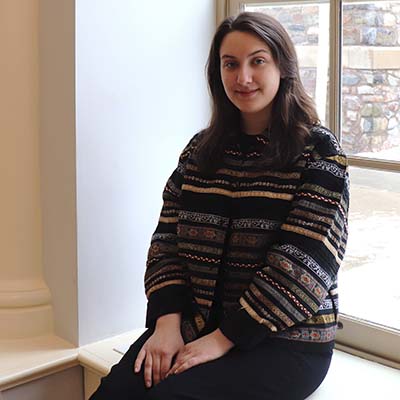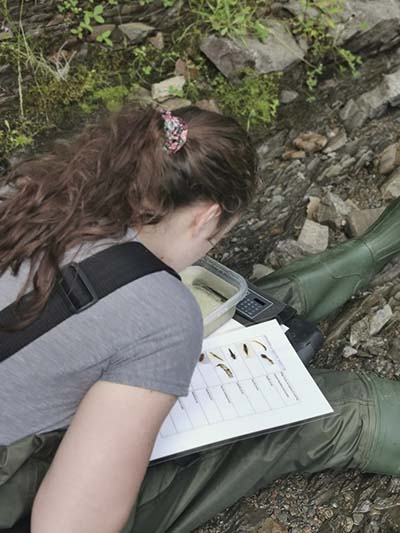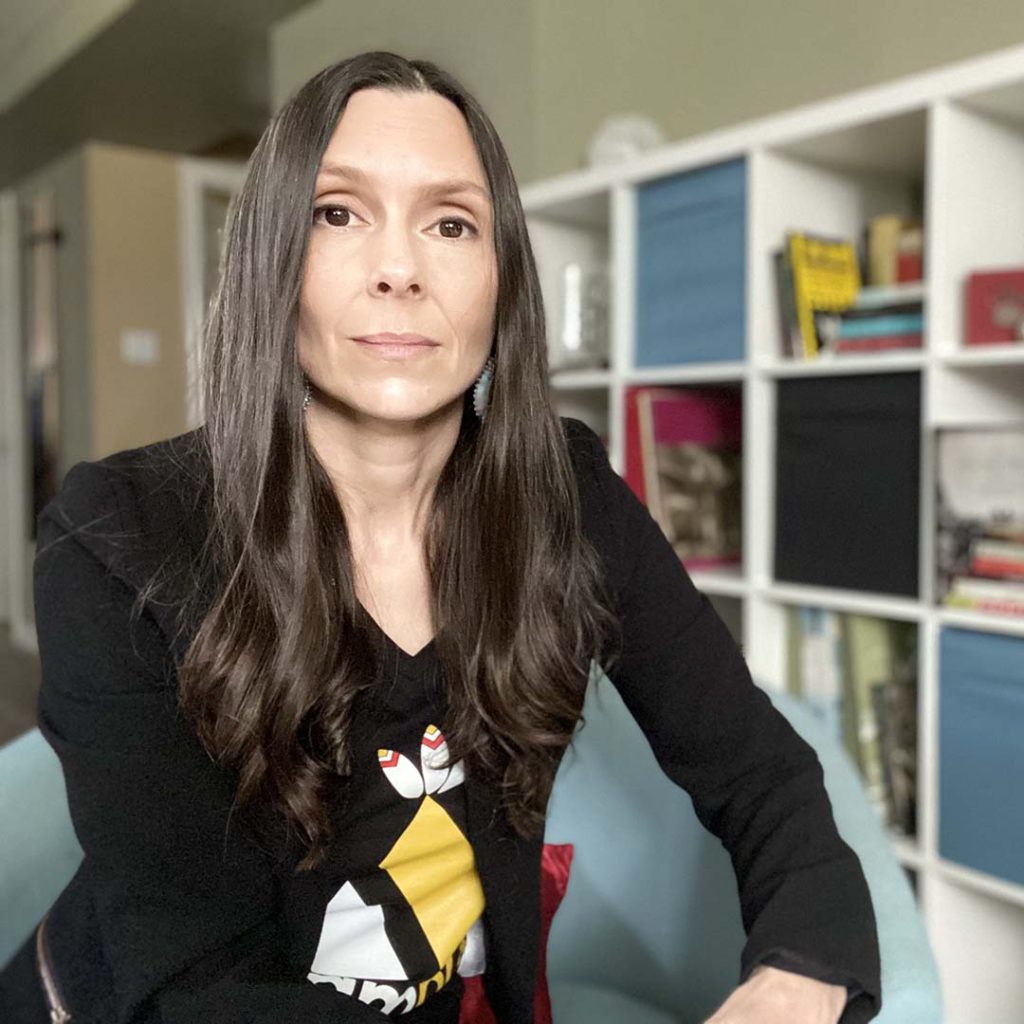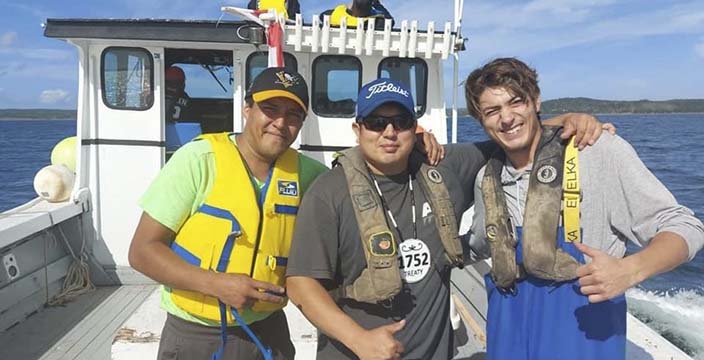Offered in person for the first time, Reporting in Mi’kma’ki is a collaboration with Eskasoni First Nation that will teach students what it means to report Indigenous stories ethically
In May of 2022, a group of King’s journalism students will take on the singular experience of moving from the classroom to a Mi’kmaw community.
“Reporting in Mi’kma’ki” is an on-the-ground, immersive course that teaches students how to report on Indigenous stories responsibly.

Author and second-year student Jessica Casey
After instructing last year’s course virtually, Rogers Chair in Journalism, Trina Roache, BJ’00, is looking forward to bringing this experiential learning opportunity to King’s in person, for the first time.
Roache is the primary instructor for this course, working with Associate Professor Terra Tailleur and Instructor Erin Moore. According to Roache, the course was Tailleur’s brainchild and they built the course collaboratively.
Over the four-week intensive program, students will spend time in Eskasoni, a vibrant community with a rich history. According to Eskasoni First Nation’s website, it has 4000 members, making it the largest Mi’kmaw community in the world.
Working in small teams, students will create a multimedia project, presenting their stories to community members during a special thank-you luncheon when the course comes to a close. This year’s theme is conservation.

Students in the May 2022 course Reporting in Mi’kma’ki will work with Allison McIsaac, senior biologist with Eskasoni Fish & Wildlife Commission. Here an intern with the commission is seen identifying aquatic bugs. Photo courtesy Allison McIsaac
“You learn more by doing it,” says Roache. The course gives students a basic foundation in Mi’kmaw history and understanding, while emphasizing experiential learning through conversation. “It’s really geared toward allowing the students to learn, allowing the community to share stories that they want told and to shine a light on aspects and voices in the community, on the ground.”
The course is open to graduate students and undergraduate students taking journalism as either a major or a minor.
Roache borrows a phrase from journalist and King’s alum Duncan McCue, BA’92, DCL’18, when she says, “we don’t want to be story-takers versus storytellers.” King’s intends to be part of a relationship of mutual gain with Eskasoni, which involves supporting local businesses and sharing knowledge about media literacy. “There has to be a benefit to community, so there’s this reciprocity.”
Roache says they also plan to engage with high school students in the community, to encourage students to pursue journalism at the University of King’s College.

Rogers Chair in Journalism Trina Roache
Among the 94 Calls to Action published by the Truth and Reconciliation Commission, #86 states that all journalism students across Turtle Island [the name used by many Indigenous Peoples for North America] should graduate with an understanding of Indigenous history and Peoples, including the legacy of residential schools, treaties, and Aboriginal rights.
This course is an excellent step toward this goal, but as an elective available to only twelve students at a time, it is not the end of the conversation. “It doesn’t check the box, and we don’t want to think of it in that way, of checking a box.”
Roache believes that there is more work to be done. “The curriculum itself is the larger goal. To add Indigenous content throughout the overall curriculum.”
Roache is a Mi’kmaw woman from Glooscap First Nation and she is keenly aware of the deficiencies in the media’s reporting of Indigenous stories.
“I challenge you to find a story about an Indigenous person … that’s not about an “Indigenous issue,” Roache says.

Michael Basque (centre) is the community liaison for the Potlotek fishery. Photo courtesy Michael Basque and The Signal.
In June of 2021, students from the first Reporting in Mi’kma’ki course published “Netukulimk: Our Way Forward” on The Signal. It is a story that weaves together personal accounts shared by Mi’kmaw fishers, hunters and community organizers who are fighting for their treaty rights to be recognized. At the same time, it reveals the important role of Netukulimk—a concept of hunting and harvesting that prioritizes conservation and sustainability central to their approach. Read the full story and watch the video at signalhfx.ca.
Her challenge reminded me of a poster on her office door. It was a bingo card with Indigenous stereotypes in each square: violence, warriors, spirits, addiction. The poster was from the Native American Journalist Association and advised that if your story gets bingo—kill the story.
Taking the time to speak with Roache brought to life the poster’s simple message: the importance of resisting stereotypes and seeing the person. As an Indigenous student at King’s, I found hearing this passion and understanding from a professor energizing.
“We always talk about Indigenous stories as laden with … trauma; and trauma across generations and poverty and incarceration, missing and murdered Indigenous women and residential schools … but there’s also a lot of joy and a lot of humor and a lot of love.”
Roache is a genuine and funny woman with an infectious laugh—and it’s impossible to understand what that is like without meeting her and having a conversation. This course will allow participating students to get those one-on-one opportunities to encounter Mi’kmaw people as they are—as real people.
“Good stories are always nuanced. And I think that that’s what we really want the students to understand—it’s that Mi’kmaw people are people.”
With thanks to Kathy Pratt LeGrow, BA’70, who generously made a gift to King’s in 2020 that continues to provide funding for this course.
This article originally appeared in the 2022 issue of Tidings

